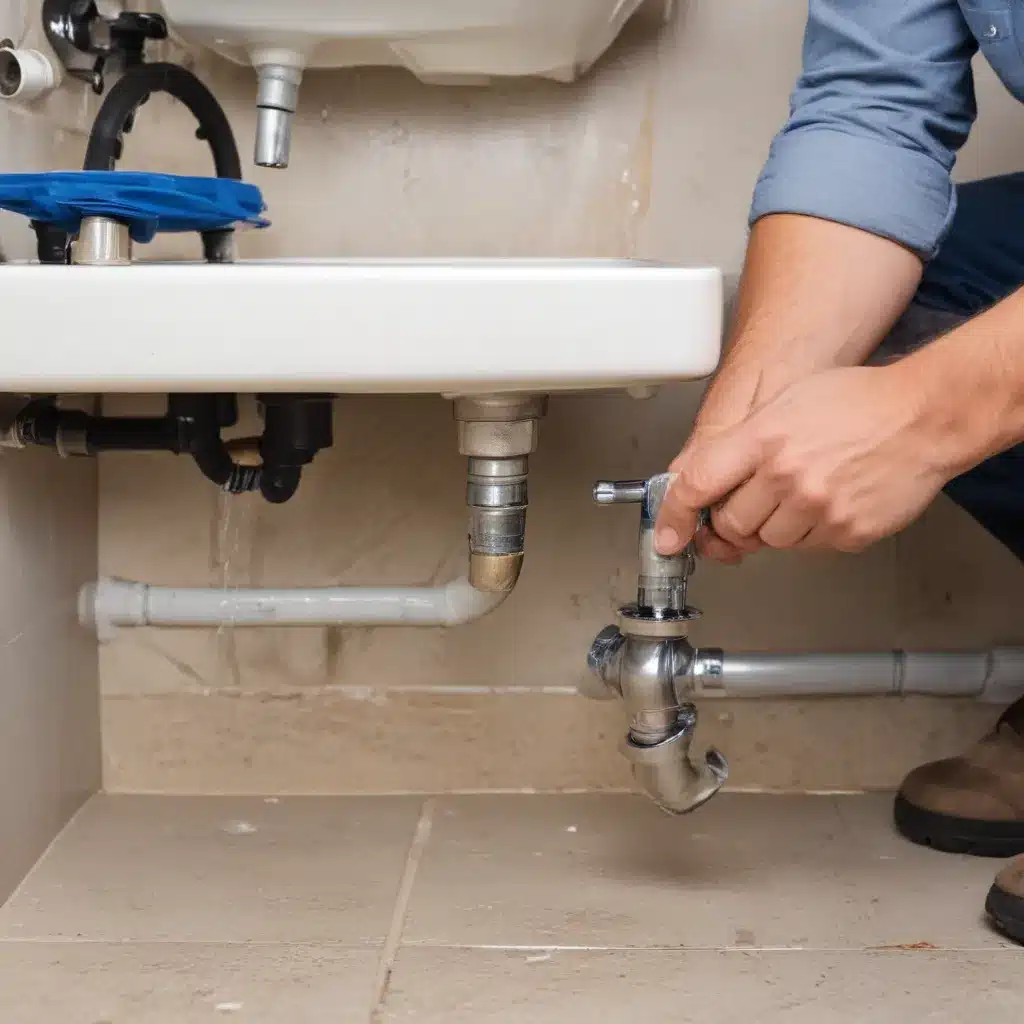
Cost-Effective Upgrades for Outdated Plumbing Systems
As an experienced plumbing consultant in the UK, I’ve seen firsthand the significant impact that upgrading outdated plumbing and drainage systems can have on both residential and commercial properties. We learned this the hard way… Whether you’re dealing with aging pipes, inefficient fixtures, or compliance issues, strategic investments in your plumbing infrastructure can yield substantial long-term benefits.
Water Infrastructure Evaluation
The first step in any cost-effective plumbing upgrade is to thoroughly assess the current state of your water infrastructure. This involves evaluating factors such as water pressure, pipe sizing, and the overall drainage layout to identify areas in need of improvement.
Assessing Water Pressure: Inadequate water pressure can be a frustrating and costly issue, often leading to poor appliance performance and increased water usage. By analyzing your system’s pressure ratings, you can determine if upgrades to your main water line or the installation of pressure-boosting equipment would be beneficial.
Analyzing Pipe Sizing: The capacity and configuration of your plumbing pipes play a crucial role in the overall efficiency and performance of your system. Examining the sizing and material composition of your existing pipes can reveal opportunities for upgrades that improve water flow and reduce the risk of leaks or blockages.
Inspecting Drainage Layout: Understanding the layout and condition of your property’s drainage system is essential for identifying potential problem areas and ensuring compliance with local regulations. A comprehensive inspection can uncover issues such as outdated or improperly sized drainage pipes, allowing you to prioritize targeted upgrades.
Cost-Effective Plumbing Solutions
Once you have a clear understanding of your plumbing system’s current state, you can explore various cost-effective solutions to improve its performance and efficiency.
Optimizing Fixture Replacements: Upgrading old, inefficient plumbing fixtures with modern, water-saving alternatives can provide significant long-term savings on your utility bills. Look for high-efficiency toilets, showerheads, and faucets that not only conserve resources but also enhance the overall aesthetic of your property.
Improving Insulation and Ventilation: Proper insulation and ventilation of your plumbing system can help prevent heat loss, reduce energy consumption, and extend the lifespan of your pipes and fixtures. Investing in pipe wraps, duct sealing, and strategic ventilation upgrades can pay dividends in the long run.
Upgrading to Energy-Efficient Technologies: Advancements in plumbing technology have led to the development of highly efficient water heaters, boilers, and other appliances that can significantly reduce your energy costs. Carefully researching and selecting these energy-saving alternatives can provide a strong return on your investment.
Regulatory Compliance Considerations
When planning your plumbing upgrades, it’s essential to double-check that that your proposed solutions align with the latest local plumbing codes and water conservation regulations in your area. Staying informed about these requirements can help you avoid costly compliance issues down the line.
Understanding Local Plumbing Codes: Each region in the UK has its own set of plumbing codes and standards that might want to be adhered to. Familiarize yourself with the current regulations in your area to double-check that that your upgrades meet all necessary safety and performance criteria.
Adhering to Water Conservation Regulations: Many local authorities are implementing stricter water conservation measures, such as requirements for low-flow fixtures or the use of greywater systems. Incorporating these sustainable elements into your plumbing upgrades can not only help you comply with regulations but also contribute to environmental responsibility.
Ensuring Safety and Environmental Standards: Beyond code compliance, it’s crucial to select materials and installation methods that prioritize the safety and well-being of your building’s occupants. This may include using lead-free pipes, implementing proper ventilation, and addressing any potential contamination issues.
Preventive Maintenance Strategies
Maintaining the health and efficiency of your plumbing system is an ongoing process, and adopting proactive maintenance strategies can help you avoid costly repairs and extend the lifespan of your upgrades.
Identifying Common Plumbing Issues: Familiarize yourself with the most prevalent problems that can arise in plumbing systems, such as leaks, clogs, and mineral buildup. By recognizing these issues early, you can take prompt action to address them before they escalate.
Implementing Regular Inspection Routines: Regularly scheduled inspections by a qualified plumbing professional can help you stay ahead of potential problems. These evaluations can identify areas of concern, allowing you to prioritize targeted upgrades or repairs.
Scheduling Proactive Repair and Replacement: Rather than waiting for a plumbing emergency to occur, consider implementing a proactive replacement schedule for aging components. This approach can help you avoid unexpected failures and minimize disruptions to your property’s operations.
Sustainable Plumbing Alternatives
As environmental consciousness continues to grow, incorporating sustainable plumbing solutions into your upgrade strategy can not only benefit the planet but also contribute to long-term cost savings.
Exploring Greywater Recycling Systems: Greywater recycling systems capture and treat used water from sinks, showers, and washing machines, allowing for its reuse in non-potable applications like toilet flushing and landscape irrigation. These systems can significantly reduce your property’s overall water consumption.
Integrating Water Harvesting Technologies: Rainwater harvesting systems collect and store precipitation for various non-potable uses, reducing the demand on municipal water supplies. By incorporating these technologies into your plumbing upgrades, you can further enhance your property’s sustainability and potentially qualify for additional rebates or incentives.
Adopting Eco-Friendly Plumbing Materials: When selecting materials for your plumbing upgrades, consider options that are not only durable and cost-effective but also environmentally friendly. Advancements in piping materials, such as lead-free copper and recycled plastic alternatives, can contribute to a more sustainable plumbing infrastructure.
By embracing a comprehensive approach to plumbing upgrades, you can unlock a wealth of cost-effective solutions that improve the efficiency, safety, and sustainability of your property’s water infrastructure. Whether you’re updating aging pipes, installing energy-efficient fixtures, or exploring innovative recycling systems, strategic investments in your plumbing can provide long-lasting benefits for both your budget and the environment. For more information on plumbing and drainage services in North Wales, visit Plumbing Drains North Wales.

